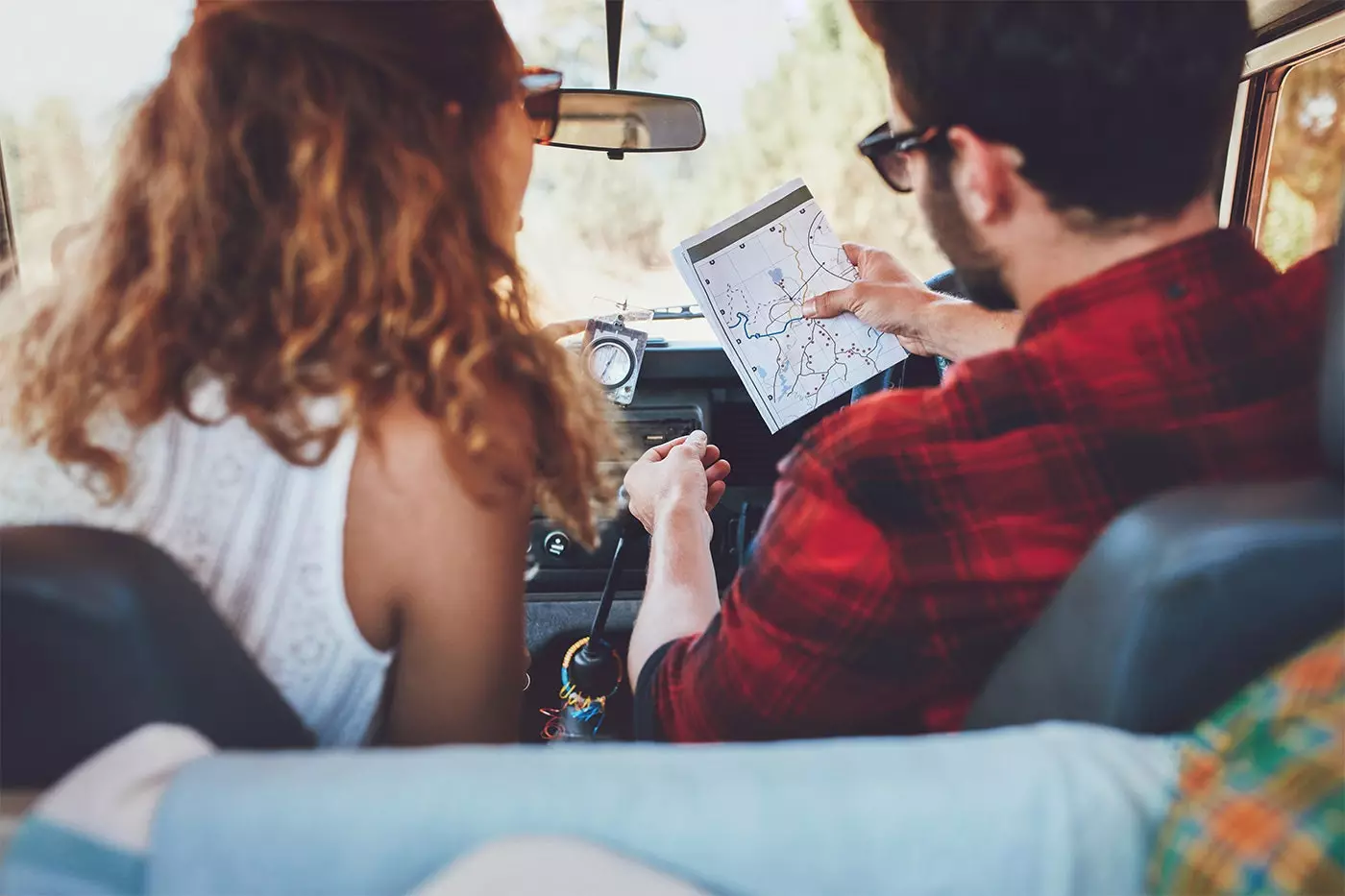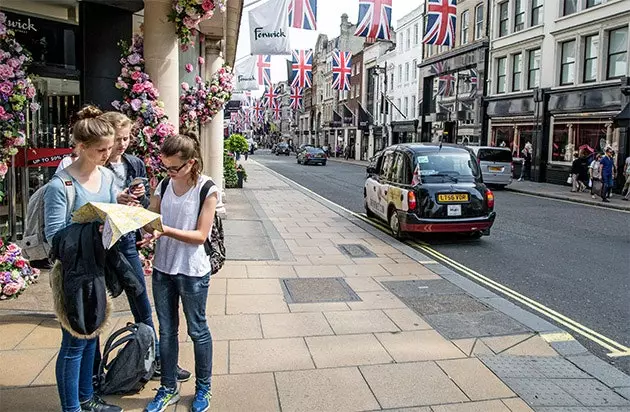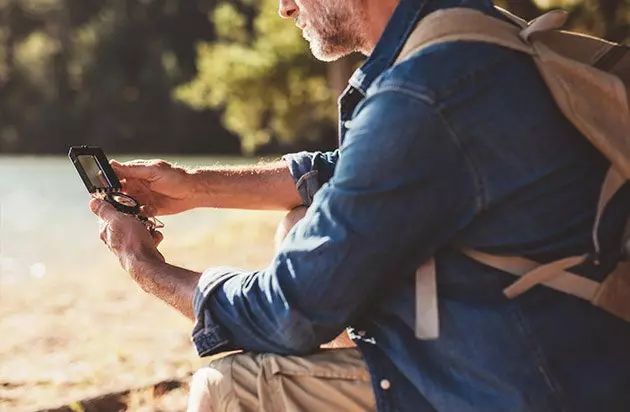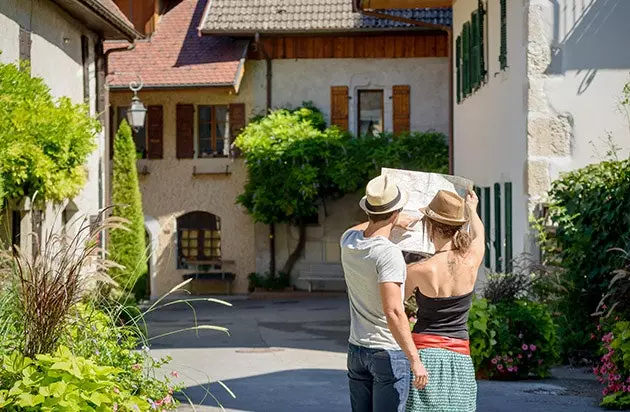
At last you will be a good co-pilot
Because yes, no matter how much we travel, no matter how much we have traveled whole countries and countries, there are those who receive a map and fearfully put it aside, with a violent slap. What kind of codes are hidden in them? How do we know where we are in the drawing? Does this mean that I am far or near? What the heck are those numbers?!
To solve all our doubts we have resorted to several sources, and one of them is our colleague Gonzalo Prieto, the brain behind the blog Infinite Geography . As you can imagine, he is a guy who, indeed, he knows a lot about maps. He knows so much, so much, that almost it has embarrassed us ask him these kinds of questions, and in fact he has acted as if we were a little joke : "If they give us a road map, what is the first thing we should look at?", we have inquired. And he has answered us: "At the destination and the starting point. Unless they give you a map to contemplate it , the usual thing will be that they give it to you to get to a place".
Look what it looks like, we know that he said it with affection. In fact, he afterwards kindly continued: "It's It is important to know where you are coming from and where you want to go. and join those two points by the shortest path (if you want to arrive soon) . Although you can also do it by an alternative path, if what you want is know another route ".

When you finish reading this article, one will be enough to understand the map
1. NORTH IS AT THE TOP
What Gonzalo misses is that we need to know other things that may seem more obvious but oh no THEY ARE NOT. For example what is in the upper part of the map is the North, and what is below is the South. That from the outset, unless there is something very obviously to the South (for example, the sea) maybe it is a convention that does not serve you much , but which is always interesting to keep in mind, especially if you intend guide you with a compass. Now, now, I know that, if you are reading this, we are not even talking about the compass, but What if you got lost in the middle of the jungle and you have no battery left in your mobile? You may be interested in having this information. Maybe this information IT CAN SAVE YOUR LIFE. Carefully read the clues that they give us from the Acivro hiking club:
"To orient the map, we place the compass parallel to the meridians (the lines that go from North to South), or to the right or left edge of the sheet, if no meridians are drawn. So, we turn the blade until the compass limb (the outer ring, which rotates) match the direction of the needle. At that point we have the oriented map ". It is important, in doing so, place the map on a surface as horizontal as possible.

Person who seems to know what he is doing
two. LOSING YOUR FEAR OF SCALE
The next thing that would be interesting to look at, I'm sure you know: the legend! That's where you'll understand those red lines are secondary roads and no, what do I know, rivers of lava. In it you will see some numbers that, as you might suspect, represent ** the scale ** at which the map is drawn, that is, what gives you an idea of how far what things really are. It is a fact that like this, cold, may not tell you much , so we are going to explain how it can make sense.
For example: if you want to know the exact distance one point is from another, you can measure it with a ruler and multiply it by the number after the "1:" There is also maps divided into grids the size of the scale, so you can do the measurement by eye, and others who have a graphic representation of it , so you can transfer it to the map and measure the distances. If you want to be understood, to do so you can use a cool ** curvimeter **.
The scale is not only used to measure distances: it is also interesting to know it to know which map to choose depending on the type of tour that we are going to carry out. For example, as explained by Acivro, the reduced scale maps (those that cover a large amount of land) are not suitable for a walking tour. "This is the case of the road and provincial maps of 1:500,000, 1:200,000, 1:100,000, which have represented too much ground for us to easily navigate on foot. On the other hand, the large-scale ones offer more details. This is the case of the 1:50,000 scale, which shows the main relief features and most of the marked trails, being appropriate for excursions on foot or by bicycle".

"I already know how to read a map!!"
3. THE QUESTION IS: WHERE AM I?
Ok, now we more or less understand the paper in front of us. But how can we find the point where we are inside it? We ask Gonzalo, who replies: " Looking for him "(wink, wink). But he doesn't stop there: he still gives us a little breath to continue: "For this , you will have to be guided by the names of what you have nearby and look for them on the map (a street, a town...) See where you come from and where you are going, they will give you your relative position ", he explains.
However, if you can't read the name of any avenue, or you have one of those tourist maps which, many times, do not include the nomenclature of all the streets, you can also look for a couple of monuments , which may be drawn. He tries to find them 45 degree angle with respect to you, and align the plane so that the point in front of you be at the top of it. So he draws a straight line from that point down , and another straight line, in this case diagonal, from your other reference, until they intersect. There will be, more or less, your location.

"Where do you say we are...?"
4: THE REAL QUESTION IS: HOW DO YOU HOLD ON A MAP?!
From here, it's up to you undertake the exciting adventure that takes you to your destination . The paths are many, and no, not all lead to Rome: lead you to end up with the map made a mess slipping through your fingers, ice cream scoops printed, with a cut that practically runs the entire length of its main fold and fighting with him in order to walk with some comfort.
You gave up closing it long ago following the folds that came from the factory, and you're lucky if it holds you without fall apart all the way. At that moment, you think of Gonzalo (or well, maybe we just do it) and you imagine it walking like a gentleman with the plan of him exquisitely preserved under his arm, with a smile which shows how little concern the whole thing causes him.
Because when we ask him what how-do-you-hold-the-damn-map , does not flinch too much: "Well, in the way what is best for one ", he replies, as if from another planet. Then he gives us a bit of humanity , as if to show that he too may have something in common with profane like us: "I, personally, I fold them a lot , of all ways, when I use them on trips. I love **planning the route of a trip with a map of the good ones** and penciling in my goals. I feel like Napoleon planning a military campaign ", he says, while he laughs with class and smugness -or so our envious minds imagine-.

well folded
